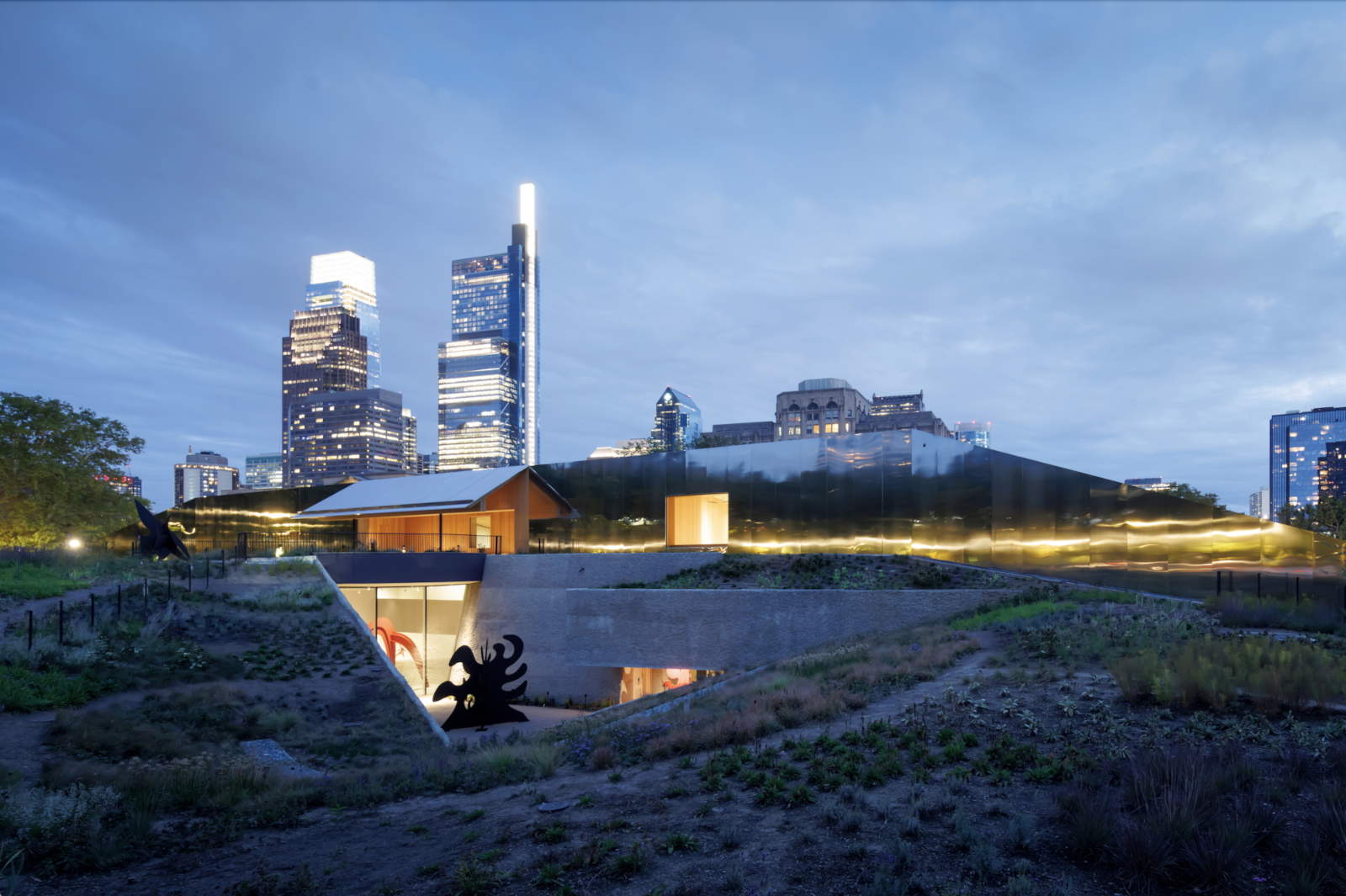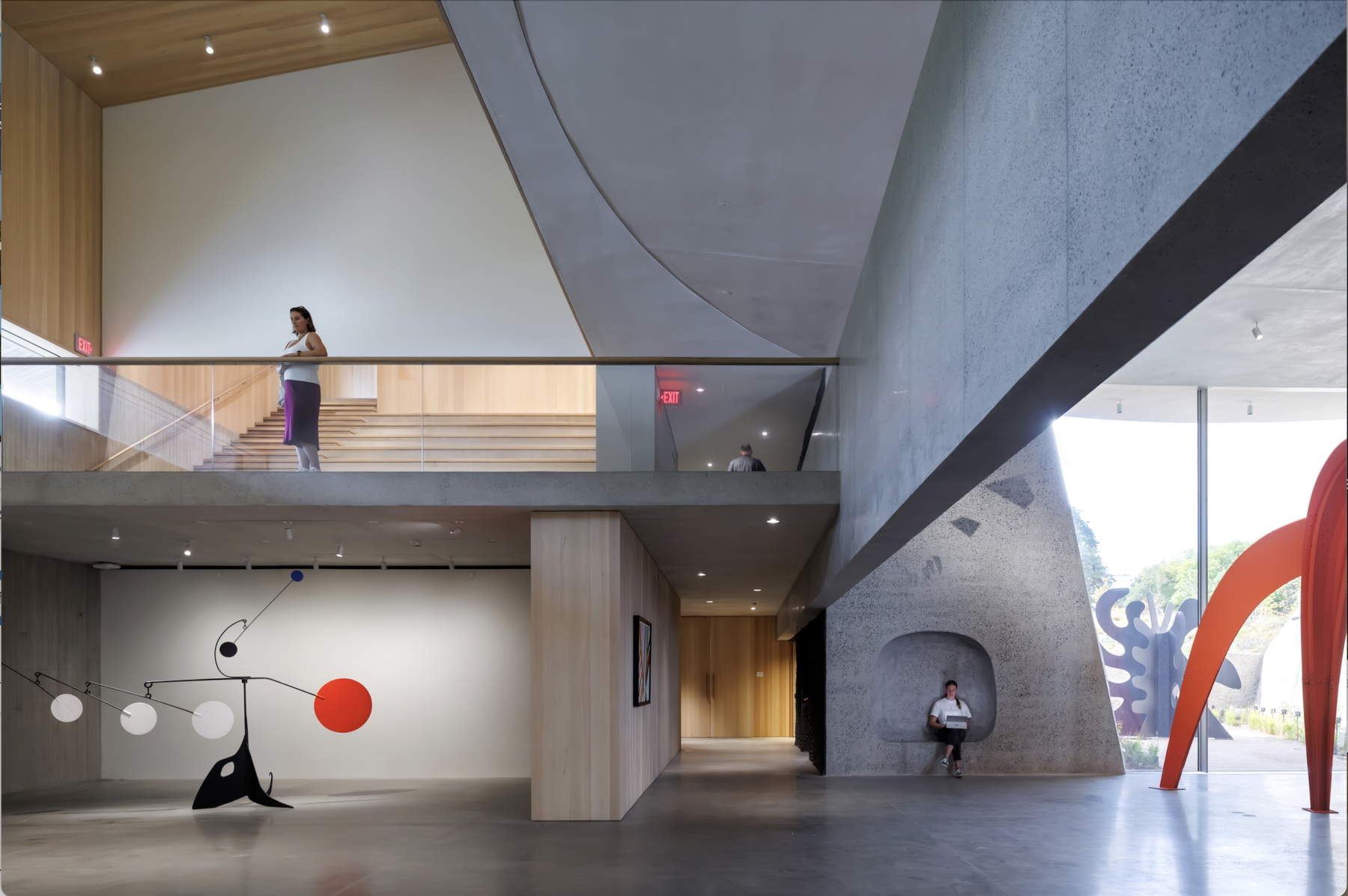In Philadelphia, Calder Gardens, a new cultural hub dedicated to the work of renowned sculptor Alexander Calder (Philadelphia, 1898 - New York, 1976), will open to the public on September 21, 2025. Located along Benjamin Franklin Parkway, between 21st and 22nd Streets, the complex was conceived as a space capable of stimulating reflection and renewal, emphasizing the dialogue between art, architecture and landscape. The opening will be preceded on Saturday, Sept. 20, by Chaos and Kisses: A Grand Opening Parade for Calder Gardens, a free public parade conceived by artist and musician Arto Lindsay and organized by Juana Berrío with Marsha Perelman, Senior Director of Programs at Calder Gardens.
Calder Gardens is the result of an unprecedented collaboration between the Calder Foundation, which leads the curatorial vision, and the Barnes Foundation, which provides management and operational support through an innovative resource-sharing model. The gardens and lawns, planted with native and perennial species, were designed by Dutch landscape architect Piet Oudolf. The building, characterized by sinuous forms, features a metal-clad façade to the north and wood cladding to the south reminiscent of Calder’s bohemian Connecticut mansion. The project bears the signature of Pritzker Prize-winning studio Herzog & de Meuron. Inside and outside, visitors will find a wide selection of Calder’s work, rotating over time and including works rarely shown to the public, some of them for the first time.
“On the surface, my grandfather pushed beyond established conventions, compressing mass and giving movement to sculpture,” says Alexander SC Rower, president of the Calder Foundation and grandson of the artist. “But at a deeper level, he explored how art can be lived in a perpetual, ever-changing present. The Calder Gardens present not so much a history as an opportunity to activate this challenging notion. The architecture and gardens invite us to direct our own journey, to interpret what we see in a unique and personal way, to use our hearts more than our heads. This is a place of reflection, introspection and discovery.”
Starting Sept. 21, Calder Gardens will be open Wednesday through Monday, 11 a.m. to 5 p.m. Subscriptions and tickets are already available at caldergardens.org. Season tickets start at $98 per year and provide exclusive benefits, such as unlimited access to Calder Gardens and the Barnes Foundation, early admission from 10 to 11 a.m., guest passes and discounts in the dedicated shop. Tickets cost $18 for adults, $16 for the over-65s, $5 for college students and children ages 13 to 18, while admission is free for children under 12.
The project has benefited from the generous contributions of numerous private supporters, foundations, businesses, as well as the Commonwealth of Pennsylvania and the City of Philadelphia. Unlike traditional museums, Calder’s works will not be accompanied by captions. The intent is to let the art itself do the talking, encouraging the public to interact freely, without mediation, at their own pace and sensibility.
Throughout the year, Calder Gardens will offer a busy calendar of activities inspired by the artist’s experimental and collaborative spirit. Performances, sound and visual experiences, screenings, readings, community initiatives and horticulture-related programs will transform the garden into a vital place of encounter, reflection and growth. All initiatives are designed to nourish mind, body and spirit, making this space a center for personal and cultural renewal.

“Calder Gardens is a vision born out of passion, perseverance, and a belief that Philadelphia deserves this cultural treasure,” says Joe Neubauer, founding board member of the Calder Gardens Trustees and one of Calder Gardens’ biggest supporters. “In a time of global uncertainty, we have come together to create a place where art and nature offer healing, inspiration and connection, thanks to three world-renowned artists-Alexander Calder, Herzog & de Meuron and Piet Oudolf. I am deeply proud to have helped bring this to our city for future generations.”
“The addition of Calder Gardens to Philadelphia’s landscape of cultural institutions is incredibly valuable and we are delighted to open its doors to our community and beyond,” says Thom Collins, Executive Director of the Neubauer Family and President of the Barnes Foundation. “A key element of the Barnes Foundation’s educational mission is to foster an appreciation of the fine arts and horticulture: while Dr. Barnes’ passion was art, his wife Laura’s was horticulture, and we see our role as an operating partner of Calder Gardens as a natural extension of this important aspect of our history.”
“In this unique assignment in Philadelphia-from the site, to the open brief, to our design process-I focused on space rather than form, which led me to explore the underground areas and discover the spaces that define the structure,” says Jacques Herzog. “Calder Gardens embodies a kind of ’design-free’ architecture that allows artworks to express their diversity and ambiguity in many different spatial contexts. It is a place where one can sit, stroll and observe, whether nature or art, as easily as one can sit under a tree.”
“Although I have admired Alexander Calder for decades, I never imagined that I would have such an extraordinary opportunity to come into direct contact with his work,” says Piet Oudolf. “At Calder Gardens, I designed a landscape that responds not only to site-specific conditions, but also to Calder’s strong acceptance of movement and change as defining elements of his art. Here in Philadelphia, Calder’s sculptures will be placed in dialogue with ever-changing gardens. Those artworks and the plants I have selected and placed will move through time at different speeds, relating to each other and to the seasons, for many years to come. I look forward to this development.”

Calder Gardens was created to celebrate the legacy of Alexander Calder (1898-1976), among the most influential and innovative artists of the 20th century. It is conceived as a place where art, nature, and architecture interact dynamically, encouraging contemplation and self-discovery. Surrounded by more than 250 plant species selected by Piet Oudolf, the 1,600-square-meter building by Herzog & de Meuron houses a constantly changing collection. The works on display span fifty years of the artist’s career and dialogue with the architectural space. Some will remain visible for a long time, others only for short periods, reflecting the natural cycles of the seasons and inviting one to return again and again to observe new perspectives.
In keeping with Calder’s experimental practice, Calder Gardens programming includes performances, sound installations, projections and lectures that relate his legacy to contemporary art. With a focus on environmental sensitivity and the interconnectedness of all aspects of life, it is a space for awareness and transformation.
Located on Benjamin Franklin Parkway in the heart of Philadelphia, the project is rooted in the Calder family’s deep history with the city. The creation of Calder Gardens was made possible through the support of local philanthropists, in partnership with the Calder Foundation and with significant contributions from the City of Philadelphia and the Commonwealth of Pennsylvania. Through an innovative model, the Barnes Foundation provides management and educational support. The Trustees of Calder Gardens, recognized as a supporting organization, provide the strategic, curatorial and financial direction necessary to support the vision of the project.
 |
| Calder Gardens, a new cultural hub dedicated to the work of Alexander Calder, opens in Philadelphia |
Warning: the translation into English of the original Italian article was created using automatic tools. We undertake to review all articles, but we do not guarantee the total absence of inaccuracies in the translation due to the program. You can find the original by clicking on the ITA button. If you find any mistake,please contact us.